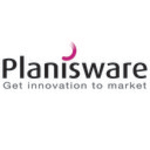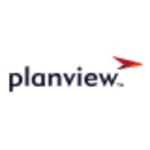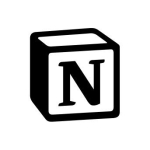What is our primary use case?
We use it for project management, resource management and, to a lesser extent, portfolio management.
We are definitely doing well in resource management, although struggling to adjust to the agile environment. As far as project management, we are doing risks and issues, status reports, change requests, all your standard issue pin box stuff, and that is going just fine. In the portfolio management space, we are going to be growing our usage, and we are excited to see the stuff in version 15.
How has it helped my organization?
It is shifting as we go through our agile transformation. In terms of being able to do quarterly status reports, board reporting, resource reporting, and that kind of thing, that has been ongoing at Schwab for a number of years. As we are shifting into the agile space, and having some differences of opinion between our card carrying PMPs and our card carrying agileists about what level of detail needs to be where, our agile community wants to manage things in terms of stories and sprints, but upper leadership still wants to see the status reports that we have always done. So, how do we make both camps happy? That is not a tool specific issue. It is really an industry issue right now.
What is most valuable?
The ability to have all of the data in one place from risks and issues to resource capacity and actual utilization. We are currently undergoing an integration with our financial systems that will allow us to bring in financials into our cost plans and minimize the need for project managers to be going into both Clarity and the financial system. They will have everything all-in-one place, so that will be really beneficial to our users.
What needs improvement?
We are still on 14.3. We have not used the new UX. I did laugh at Kurt's presentation yesterday, because he said, "You know what? Three years ago, we were up here, and I was standing in front of a bunch of PowerPoint slides. Now we actually have the functionality behind it," because that was my observation. Two years ago, they were basically just screen mocks, and it all looked great, but what do you do?
My concern with the new UX is that my core users, the folks who are in Clarity day in and day out, are not going to get the full benefit of the new UX until we have OBSS and all of the other functionality available. I understand the need to tailor the new UX to make time tracking easier, make resource management easier, and do those kinds of things. I get that, but folks are going to track their time anyway, because they want to get paid.
The most vocal folks in my stakeholder community are those day-in day-out PMO analysts and resource managers. I struggle also from a maintenance and support perspective. Now, I am going to be maintaining both new UX screens, which the blueprints make look like it is going to be really easy, but we would still have to be maintaining new UX screens as well as classic views for those functionalities that are not yet available in the new UX.
I have this idea. We currently have the ability to allocate from assignments. Something that we are doing in our organization is we have created a report which we give back to the resource managers, "Hey, based on the last three months of actuals, here is what your work projection looks like."
I would love to see that go the next step forward and just allocate from actuals. If you can look at it and say, "Okay, based on actuals for the last six months, here is what we think this is going to look like." That at least gives the resource manager a place to start, and a way to have a conversation. Particularly, as we get into agile teams, those teams are working on the same thing for extended period of time. It is not like they're on and off. It is more of the agile approach, where it is ongoing, continuous improvement, and deployment. That is something that I think would be interesting, and I do not know if it is something that CA has looked at before.
What do I think about the stability of the solution?
We have been quite stable. We are on-premise, so obviously any stability problems that we are having is on my infrastructure guy. He might be the better person to answer that question, but we have not had challenges.
We are relatively new to Jaspersoft, and are running into some speed and performance issues (not necessarily stability issues), and also some unpredicted behavior. I think that we are on the initial release of Jaspersoft, so maybe some of these things have been addressed in later releases.
What do I think about the scalability of the solution?
I will reference my last job where when I first started, nine years ago, working with PPM (Clarity), we started out with a PMO of about 20 people, and keeping track of IT resources in the couple hundreds. Over those eight years, we scaled to a PMO of 250 people and thousands of users.
So, I have seen it scale up. I have also, unfortunately, seen it scale back down, which is why that is where I used to work. So, it is definitely a scalable system.
How is customer service and technical support?
I have worked with CA Services in the past and felt they were knowledgeable. We have a few open tickets.
In terms of tech support, I would refer you to my development lead. They do most of the work with tech support.
How was the initial setup?
It was already installed when I came to work for my current employer.
Which other solutions did I evaluate?
In my previous job, I was doing a side-by-side pilot with PPM and a competitor. There were pros and cons to both. Nobody is perfect in the space. Some of the downfalls and frustrations are when, coming into a new organization, it has been over-customized or they have over-engineered things. So, keeping us safe from ourselves, while still giving us flexibility, would be a great way to do that.
What other advice do I have?
No tool is going to fix your process problems. You better have a pretty good process in place, and know exactly what it is you are trying to do. Implementing a tool in parallel with implementing a process, you are potentially going to do that sort of over-engineering that I was talking about. The tool is not going to solve the problem. The tool can help you automate, but it is not going to solve those problems.
Most important criteria when selecting a vendor: Being available when we need them, and leaving us alone otherwise. Being available to us when we need the assistance. It is great to have a relationship where you are not always trying to sell us something, but when you see something that is a good fit. It is sort of like crying wolf. If you are always trying to sell us new features and so forth, we are not going to want it unless we really need it.
I will throw another thought out there, which is I am getting a lot of pushback from my management about, "Hey, we need to upgrade, because this is coming end of life." We hear that a lot from our vendor partners. "This is becoming end of life. It is going out of support." The feedback that we get from my management, and what I am going to be asking my account team to tell me is, "Do not tell me it is going to be out of support and we have to upgrade. Tell me what it is going to do for me over and above what I currently have, then I can sell it to my leadership."
Disclosure: PeerSpot contacted the reviewer to collect the review and to validate authenticity. The reviewer was referred by the vendor, but the review is not subject to editing or approval by the vendor.
















